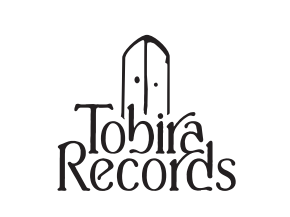The Malombo Jazz Makers // Down Lucky's Way LP
- Item no:
- Availability:
南アフリカのジャズバンドThe Malombo Jazz Makersが、2023年にイギリスのジャズレーベルTapestry Worksからリリースした再発レコードです。(オリジナルは1969年リリース)
アフロスピリチュアル・ジャズ6曲を収録。
以下、レーベルによる解説です。
"ルーカス・'ラッキー'・マドゥメジャ・ランクー(1941-2016)は、同世代で最も偉大なアフリカ人ギタリストのひとりだった。彼が最初にその名を轟かせたのは、ギタリストのフィリップ・タバネ、ドラマーのジュリアン・バフラ、フルート奏者のアビー・シンディによってマメロディ・タウンシップで結成された伝説的なマロンボ・ジャズメンの後継グループThe Malombo Jazz Makersだった。1965年にタバネがジャズメンから脱退すると、バフラとシンディは彼の後任としてラッキーに声をかけThe Malombo Jazz Makersが誕生した。オリジナルのマロンボ・ジャズメンの人気と成功を土台に、The Malombo Jazz Makersは絶大な人気を博し、広くツアーを行い、数々のジャズコンテストで優勝し、ガロ・レーベルに2枚のアルバムを録音して成功を収めた。
ディープでヒプノティックな「Down Lucky's Way」は彼らの3枚目のアルバムである。1969年に録音されたこのアルバムは、The Malombo Jazz Makers初の追加楽器をフィーチャーしたアルバムであり、アビー・シンディがフルートだけでなくソプラノ・サックスでも参加した最初のアルバムでもある。しかし、何よりも「Down Lucky's Way」は、ラッキー・ランクーの唯一無二のギター・ヴィルトゥオジティの魅惑的なショーケースである。これまでのレコーディングとはまったく異なるこのアルバムは、オルガンベースとギターのオーバーダブが重なり、The Malombo Jazz Makersのサウンドを催眠的で伸びやかなコンポジションへとシフトさせた。The Malombo Jazz Makersの録音の中で、「Down Lucky's Way」は最も深いムードと豊かなヴィジョンを持つ作品である。"
------------------------------------------
12" black vinyl.
Tracklist:
1. Tribute to A. Motjuoadi 02:45
2. Bahula Dithabeng 09:53
3. Gae Mamelodi 10:32
4. Sefuralong 07:54
5. Matshenyogo 04:50
6. Lucky's Way 06:20
Text excerpt by Tapestry Works:
"First issue since 1969 of the Malombo Jazz Maker’s unknown third album, fully licensed from Julian Bahula, with liner notes featuring interviews with Julian Bahula and Lucky Ranku.
'Malombo music is an indigenous kind of music. If you listen to it, you can feel that it can heal you, if you’ve got something wrong. It’s healing music.'
Lucky Ranku
Lucas ‘Lucky’ Madumetja Ranku (1941-2016) was one of the greatest African guitarists of his generation. He first made his name with the Malombo Jazz Makers – the successor group to the legendary Malombo Jazzmen, formed in Mamelodi township by guitarist Philip Tabane, drummer Julian Bahula and flautist Abbey Cindi. When Tabane left the Jazzmen in 1965, Bahula and Cindi called on Lucky to replace him, and the Malombo Jazz Makers were born. Building on the popularity and success of the original Malombo Jazzmen, the Malombo Jazz Makers become immensely popular, touring widely, winning numerous jazz competitions, and recording two successful albums for the Gallo label.
The deep and hypnotic 'Down Lucky’s Way' was their third album. Recorded in 1969, it was the first Malombo Jazz Makers album to feature additional instruments, and the first to feature Abbey Cindi on soprano saxophone as well as flute. But more than anything else, 'Down Lucky’s Way' is a transfixing showcase for Lucky Ranku’s sui generis guitar virtuosity. Quite different from their previous recordings, the album shifted the Jazz Makers’ sound toward hypnotic, extended compositions, layered by organ bass and guitar overdubs. Of all the Malombo Jazz Makers recordings, 'Down Lucky’s Way' is the deepest of mood, and the richest of vision..."
Artist : The Malombo Jazz Makers
Label : Tapestry Works
CAT No : TWLP002
南アフリカのジャズバンドThe Malombo Jazz Makersが、2023年にイギリスのジャズレーベルTapestry Worksからリリースした再発レコードです。(オリジナルは1969年リリース)
アフロスピリチュアル・ジャズ6曲を収録。
以下、レーベルによる解説です。
"ルーカス・'ラッキー'・マドゥメジャ・ランクー(1941-2016)は、同世代で最も偉大なアフリカ人ギタリストのひとりだった。彼が最初にその名を轟かせたのは、ギタリストのフィリップ・タバネ、ドラマーのジュリアン・バフラ、フルート奏者のアビー・シンディによってマメロディ・タウンシップで結成された伝説的なマロンボ・ジャズメンの後継グループThe Malombo Jazz Makersだった。1965年にタバネがジャズメンから脱退すると、バフラとシンディは彼の後任としてラッキーに声をかけThe Malombo Jazz Makersが誕生した。オリジナルのマロンボ・ジャズメンの人気と成功を土台に、The Malombo Jazz Makersは絶大な人気を博し、広くツアーを行い、数々のジャズコンテストで優勝し、ガロ・レーベルに2枚のアルバムを録音して成功を収めた。
ディープでヒプノティックな「Down Lucky's Way」は彼らの3枚目のアルバムである。1969年に録音されたこのアルバムは、The Malombo Jazz Makers初の追加楽器をフィーチャーしたアルバムであり、アビー・シンディがフルートだけでなくソプラノ・サックスでも参加した最初のアルバムでもある。しかし、何よりも「Down Lucky's Way」は、ラッキー・ランクーの唯一無二のギター・ヴィルトゥオジティの魅惑的なショーケースである。これまでのレコーディングとはまったく異なるこのアルバムは、オルガンベースとギターのオーバーダブが重なり、The Malombo Jazz Makersのサウンドを催眠的で伸びやかなコンポジションへとシフトさせた。The Malombo Jazz Makersの録音の中で、「Down Lucky's Way」は最も深いムードと豊かなヴィジョンを持つ作品である。"
------------------------------------------
12" black vinyl.
Tracklist:
1. Tribute to A. Motjuoadi 02:45
2. Bahula Dithabeng 09:53
3. Gae Mamelodi 10:32
4. Sefuralong 07:54
5. Matshenyogo 04:50
6. Lucky's Way 06:20
Text excerpt by Tapestry Works:
"First issue since 1969 of the Malombo Jazz Maker’s unknown third album, fully licensed from Julian Bahula, with liner notes featuring interviews with Julian Bahula and Lucky Ranku.
'Malombo music is an indigenous kind of music. If you listen to it, you can feel that it can heal you, if you’ve got something wrong. It’s healing music.'
Lucky Ranku
Lucas ‘Lucky’ Madumetja Ranku (1941-2016) was one of the greatest African guitarists of his generation. He first made his name with the Malombo Jazz Makers – the successor group to the legendary Malombo Jazzmen, formed in Mamelodi township by guitarist Philip Tabane, drummer Julian Bahula and flautist Abbey Cindi. When Tabane left the Jazzmen in 1965, Bahula and Cindi called on Lucky to replace him, and the Malombo Jazz Makers were born. Building on the popularity and success of the original Malombo Jazzmen, the Malombo Jazz Makers become immensely popular, touring widely, winning numerous jazz competitions, and recording two successful albums for the Gallo label.
The deep and hypnotic 'Down Lucky’s Way' was their third album. Recorded in 1969, it was the first Malombo Jazz Makers album to feature additional instruments, and the first to feature Abbey Cindi on soprano saxophone as well as flute. But more than anything else, 'Down Lucky’s Way' is a transfixing showcase for Lucky Ranku’s sui generis guitar virtuosity. Quite different from their previous recordings, the album shifted the Jazz Makers’ sound toward hypnotic, extended compositions, layered by organ bass and guitar overdubs. Of all the Malombo Jazz Makers recordings, 'Down Lucky’s Way' is the deepest of mood, and the richest of vision..."
Artist : The Malombo Jazz Makers
Label : Tapestry Works
CAT No : TWLP002
Related Products

You may also like:

You may also like:

You may also like:




